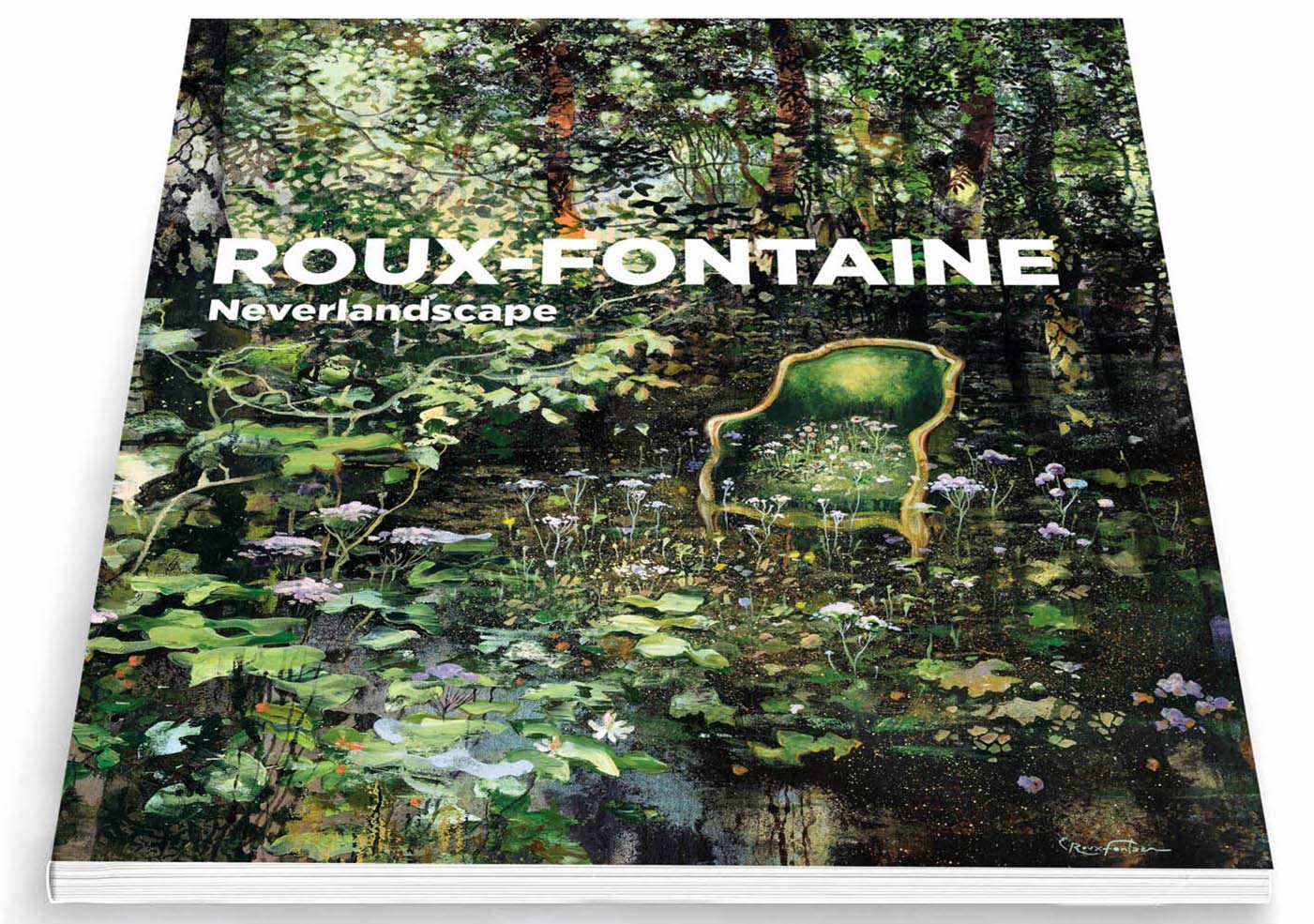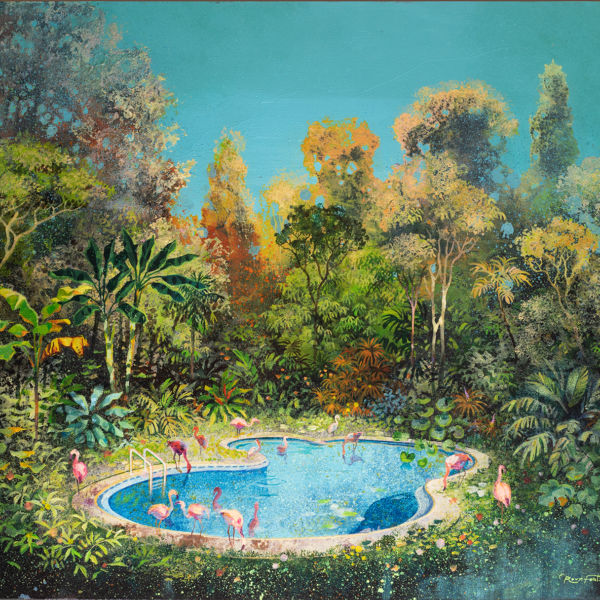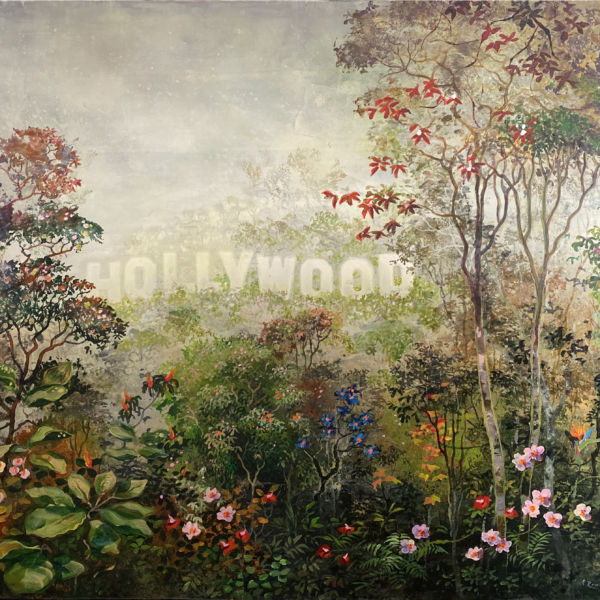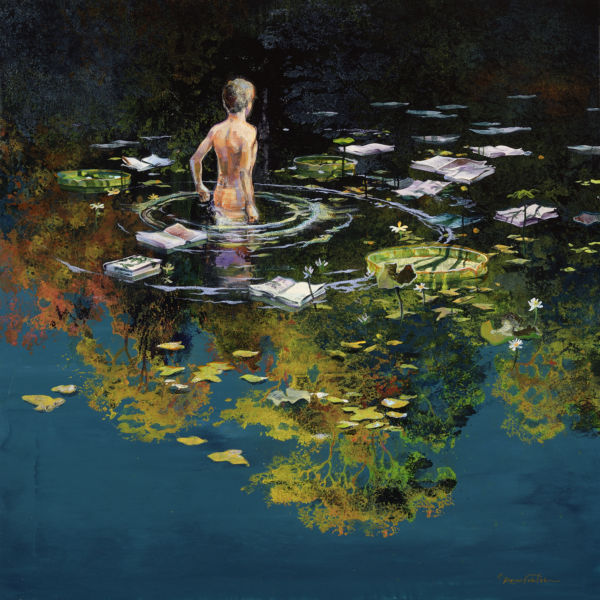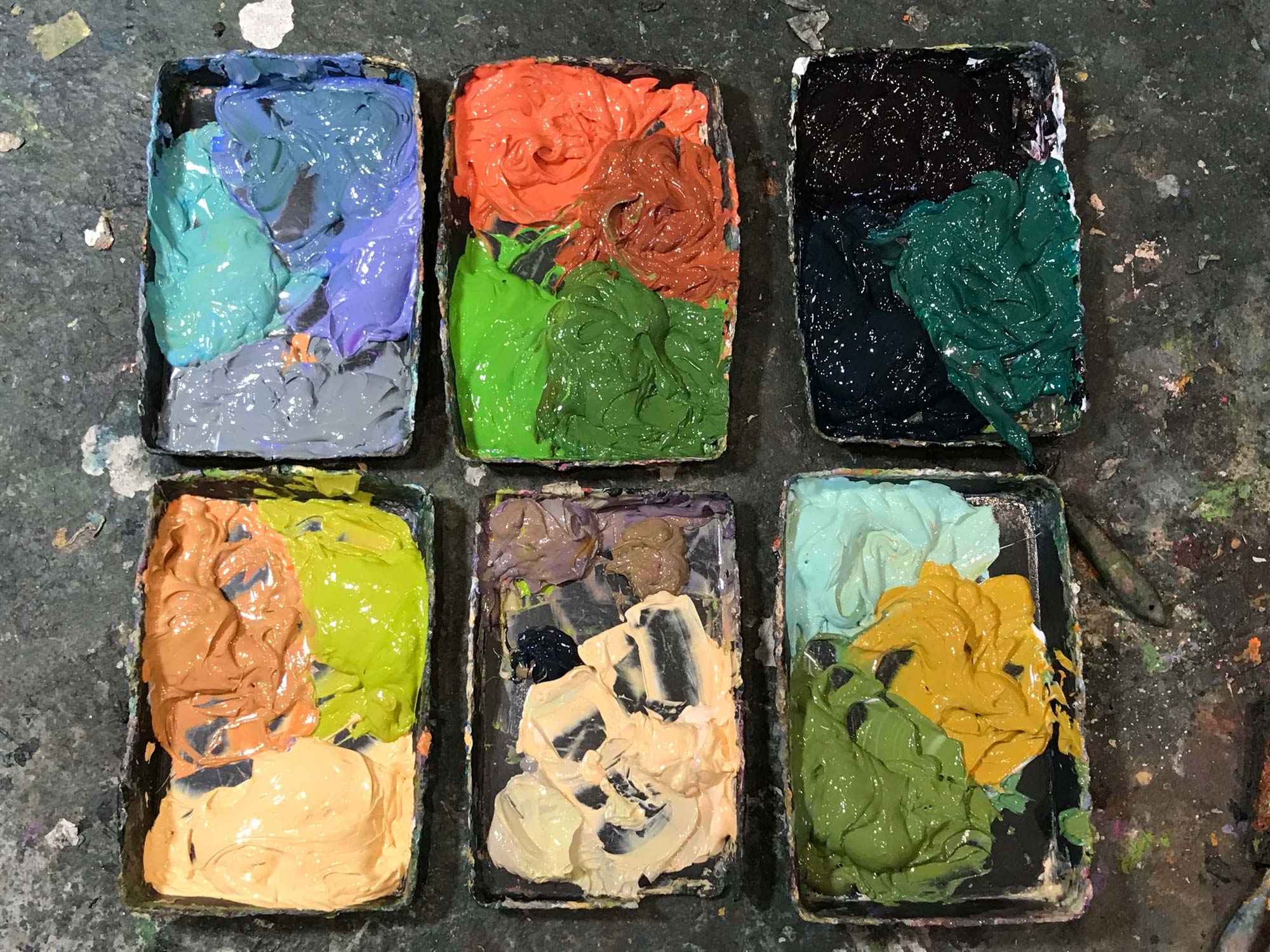Eric Roux Fontaine
Works of the artist
Eric Roux Fontaine
Biography
Painting is about allowing yourself to be carried down a river without knowing where it will lead
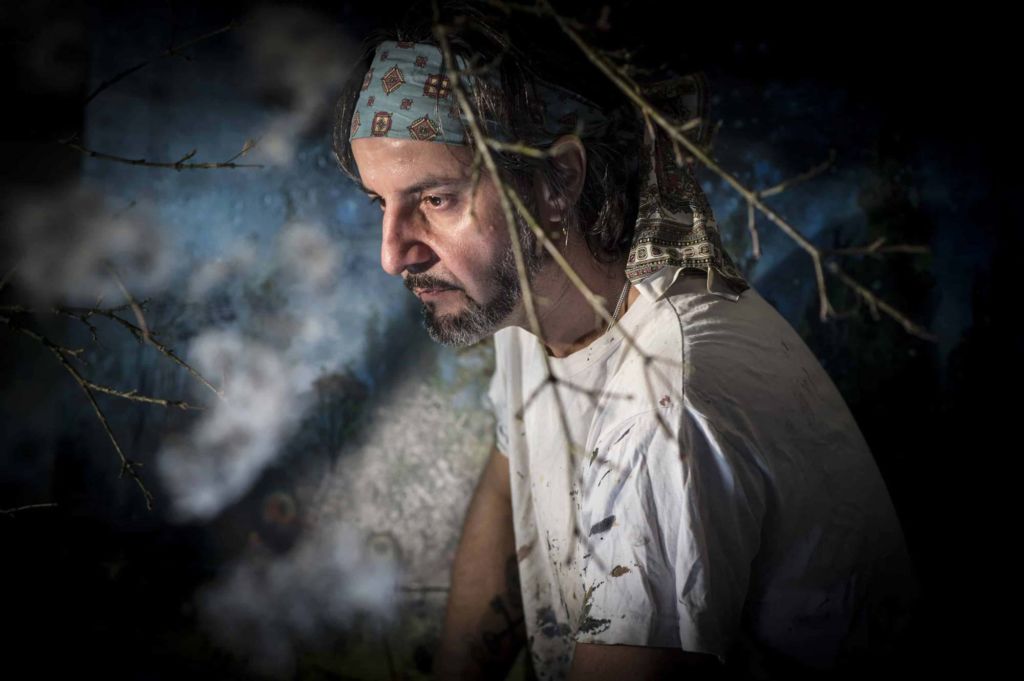 Following the example of nineteenth century explorer painters who had completed the Grand Tour, Eric Roux-Fontaine’s various trips to India and Central America have shaped the substratum of his painting (the structure on which something else is built). It swings like a pendulum between work created in the isolation of the studio and his need to measure it against the world, as if to test its resilience. It is this, and much more besides, which he seeks in the seclusion of his cabin in the heart of the Central American jungle. “From the whole world to the heart of the world,” as Blaise Cendrars might have put it. This to and fro motion, systolic and diastolic, is like a primal urge which pushes him at every stage to take his painting to new places.
Following the example of nineteenth century explorer painters who had completed the Grand Tour, Eric Roux-Fontaine’s various trips to India and Central America have shaped the substratum of his painting (the structure on which something else is built). It swings like a pendulum between work created in the isolation of the studio and his need to measure it against the world, as if to test its resilience. It is this, and much more besides, which he seeks in the seclusion of his cabin in the heart of the Central American jungle. “From the whole world to the heart of the world,” as Blaise Cendrars might have put it. This to and fro motion, systolic and diastolic, is like a primal urge which pushes him at every stage to take his painting to new places.
From his interactions with the shamans of the Borucas and the Drabarnis of the Roma community, Eric has developed a unique vision of the time and space which he has actually experienced or dreamt. For Eric, it is about “sifting the world”. This is reflected on the canvas in a series of thin coats of paint which form layers, and the raw material is therefore distilled in this way. As surfaces on a support, the various glazes cover or reveal elements of dreams at will, until they create the desired vibrations as the canvas becomes the palimpsest of his inner territory, of his private geography. The narrative tension therefore successfully combines gesture and image: an artist immersed in his work questions the fragile place of man in the heart of nature.
The viewer faced with the depth of Eric Roux-Fontaine’s landscapes plunges into a world which is all about painting. The titles of his recent series – Neverlandscapes and Lunar Park – speak volumes about this state of abandonment, offering an epilogue to the rejection of a reality which cannot fully satisfy him. How do you get there? Follow the “second star to the right and straight on ‘til morning.”[4] Here, there are no hours or seasons.
This series of shifts towards a dream world reveals an affinity between Eric’s painting and the Magical Realism which permeates the literature of Central America and Eastern Europe.
A timid panther drinks from a bottomless pool. Elsewhere, a pachyderm, king of long-lost lore, plods towards an unknown destination (Title of the work, date). In the blooming roses protecting the abyss of the jungle, the lush green foliage cauterises a gash of ultramarine blue which appears out of nowhere. Golden brown, enhanced with a fresh ochre accent, traces evanescent outlines. In other paintings, childhood flies away on the carousel of a life which flashes by like the seconds of an impossible eternity (Title of the work, date).
There used to be a time when the elements of the living world spread love little by little; a time when nomads and dreamers were in empathy. Their languid souls still knew how to meditate and contemplate. Thus, silence embraced sopor like a huge wave – a width of imaginary silk which now hangs from the lips of an artist whom words never betray.
Damien Chantrenne, Director and Curator, Musée d’Art et d’Histoire de Dreux, France.
[1] Eric Roux-Fontaine
[2] In south-east France. [Cette référence n’est pas indiquée dans le text]
[3] A Roma word for a land which is never reached. [Neverland ? Cette référence n’est pas indiquée dans le text]
[4] J. M. Barrie, Peter Pan, or The Boy Who Wouldn’t Grow Up, 1904
